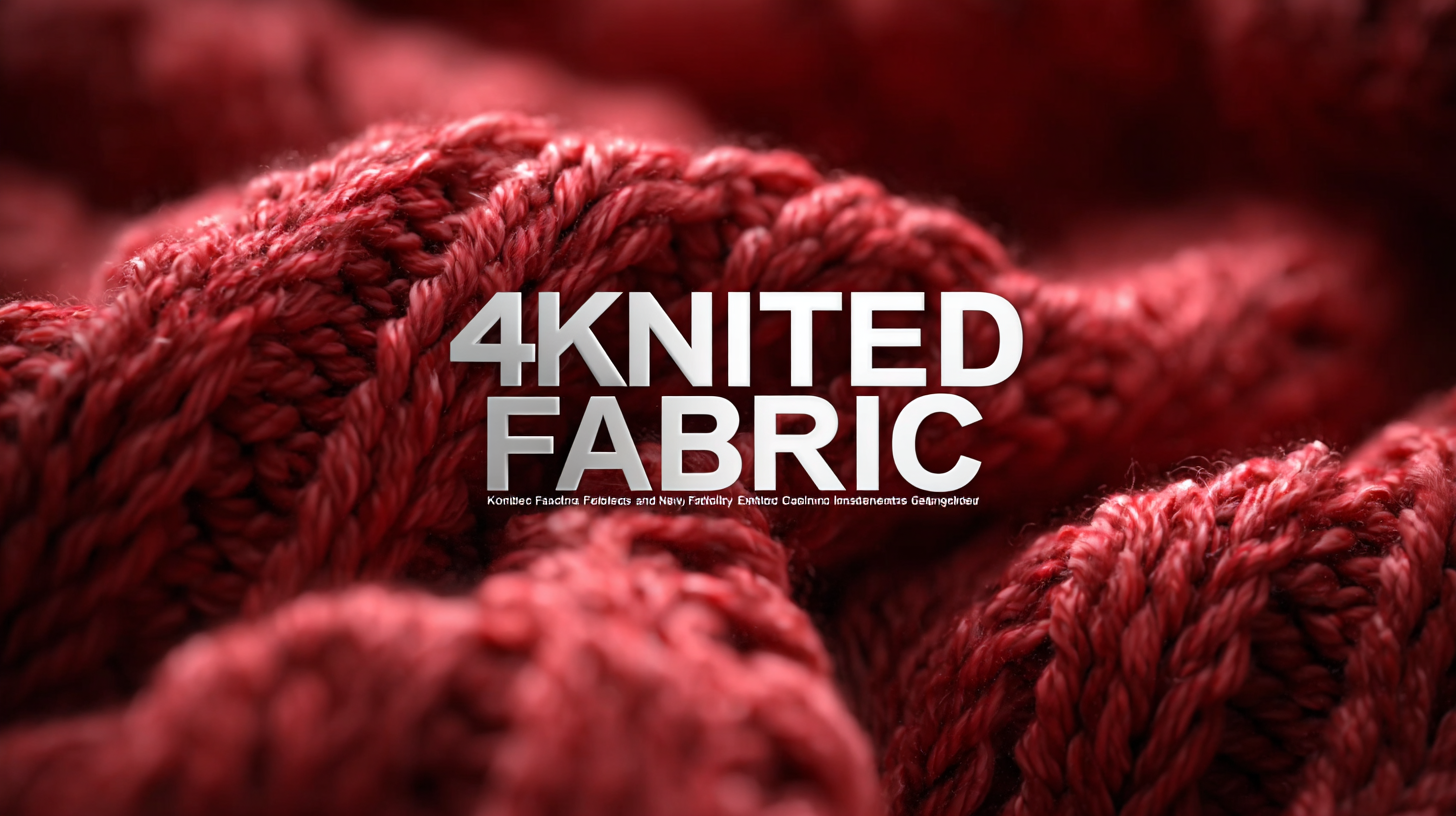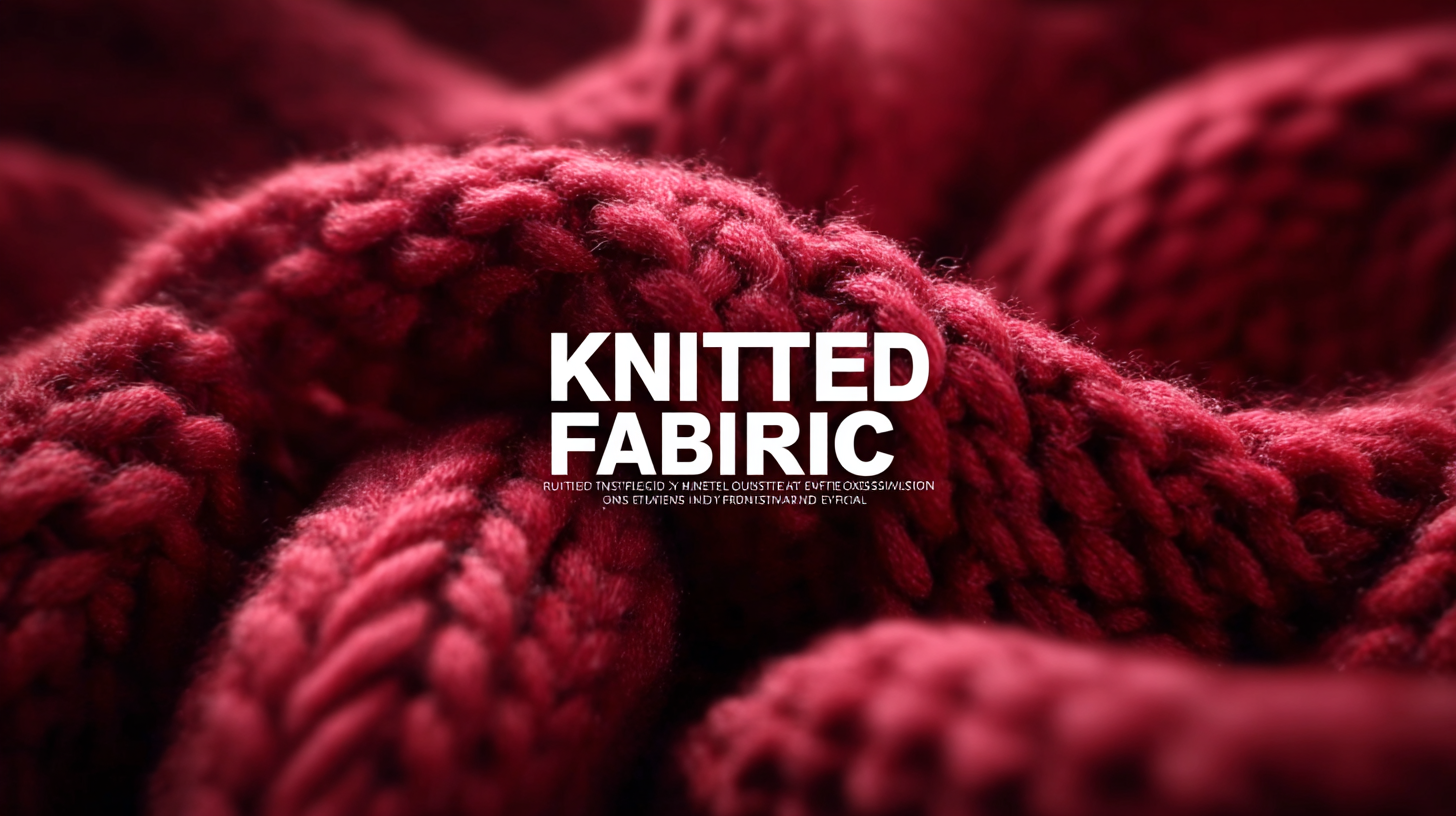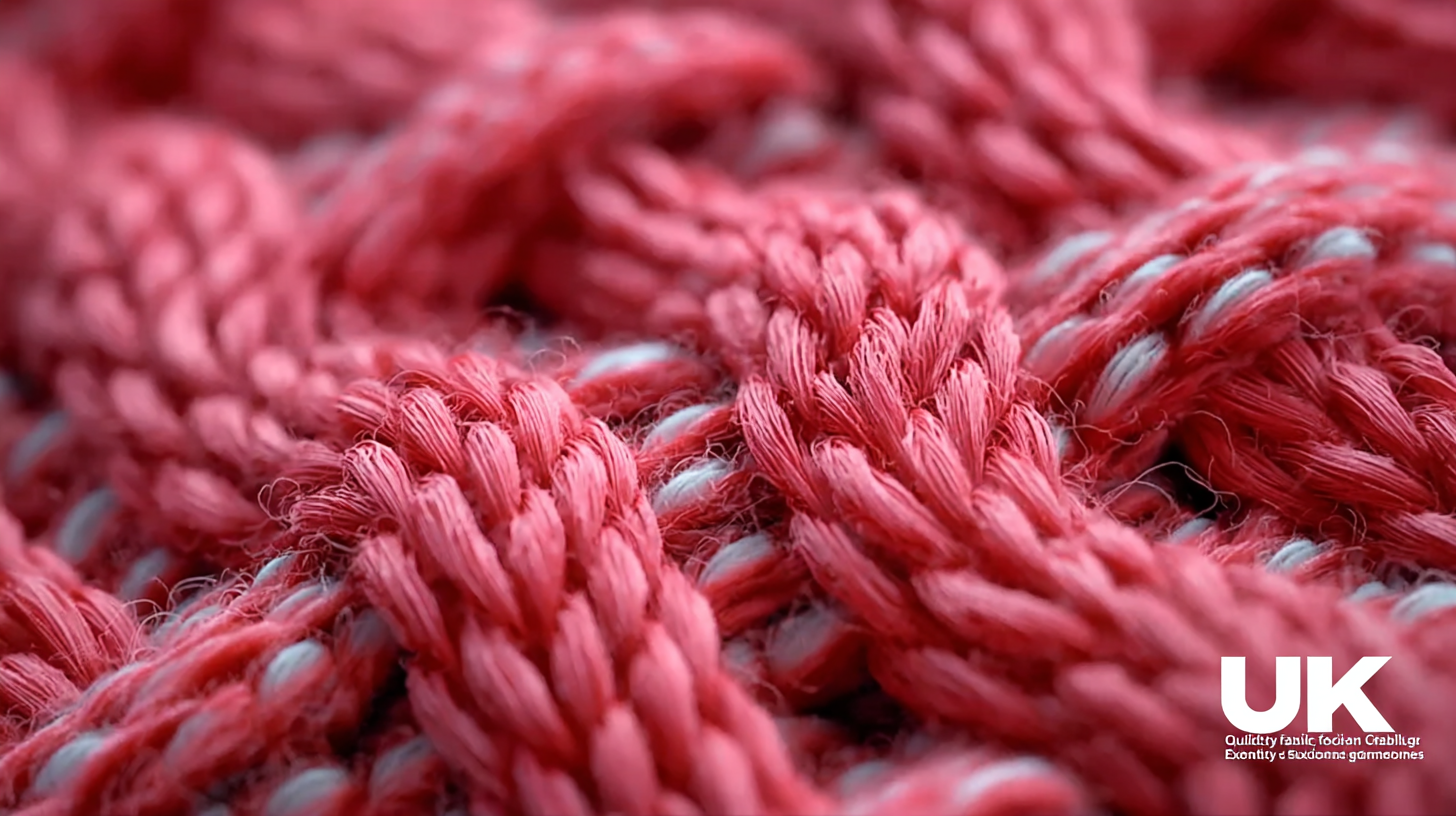In recent years, the global textile industry has witnessed a remarkable transformation, with China emerging as a frontrunner in the production of high-quality knitted fabric. This evolution in manufacturing excellence not only showcases the advancements in technology and techniques but also sets new standards for quality across the globe. As the demand for sustainable and innovative fabric options grows, Chinese manufacturers are redefining what it means to produce knitted fabric that meets both aesthetic and functional requirements. From intricate patterns to soft, breathable materials, the versatility of knitted fabric from China is catching the attention of designers and brands worldwide. This blog will explore the various examples of China's impact on the global knitted fabric landscape, highlighting how these developments are shaping industry practices and consumer expectations.

The evolution of knitted fabric manufacturing standards in China has been nothing short of remarkable. Over the last two decades, China has transformed from a low-cost producer to a global leader in quality and innovation. According to a report by the Textile Association, China's contribution to the global knitted fabric market reached approximately 60% in 2022, underscoring its vital role in the industry. This significant growth is attributed to advancements in technology and an increasing commitment to sustainability, with many manufacturers adopting eco-friendly practices and materials, which are now a crucial part of the production process.
Moreover, the Chinese knitted fabric sector has seen the implementation of stringent quality control measures, ensuring that products not only meet but often exceed international standards. The China National Chemical Fiber Corporation reported that 85% of textiles produced in the country are compliant with international certifications such as OEKO-TEX and GOTS. This dedication to quality is redefining global manufacturing standards, making Chinese knitted fabrics not just a cost-effective option, but a high-quality choice for brands worldwide, promoting a shift in consumer perception and preference towards Chinese products.

In the rapidly evolving knitted fabric industry, quality control has become paramount to maintaining competitive edge and meeting global standards. Key certifications such as ISO 9001, OEKO-TEX Standard 100, and GOTS (Global Organic Textile Standard) play crucial roles in ensuring that products not only meet customer expectations but also comply with environmental and safety regulations. According to a report from the International Textile Manufacturers Federation (ITMF), over 75% of manufacturers have implemented these certifications to enhance their operational efficiency and product consistency.
The significance of these certifications can be observed in various market trends. For instance, the global demand for sustainable textiles is increasing, with a projected growth rate of 9.7% from 2021 to 2028, as reported by Grand View Research. Fabrics certified by GOTS are particularly sought after, as they guarantee that the materials used are organic and produced in environmentally friendly facilities. Furthermore, a study by Statista reveals that consumers are willing to pay up to 20% more for products that are certified safe and sustainable, highlighting the economic advantages that quality control certifications can offer manufacturers aiming for long-term success in an increasingly conscious market.
This chart illustrates the number of certified manufacturers in the knitted fabric industry, showcasing the importance of various quality certifications such as ISO 9001, OEKO-TEX, GOTS, BSCI, and WRAP. These certifications help ensure that manufacturers adhere to global standards of quality and sustainability.
When choosing superior quality knitted fabrics from China, it's essential to consider several key factors. First, look for manufacturers with a proven track record of excellence in production techniques. Reputable suppliers often showcase their commitment to quality through certifications and third-party verifications, ensuring that their fabrics meet international standards. Engaging with suppliers who provide transparent information about their manufacturing processes and materials can give you confidence in the fabric's longevity and performance.

Another critical element is the capacity for customization. The best knitted fabric suppliers in China offer a wide range of options in terms of color, design, and texture, allowing buyers to tailor their orders to specific needs. This flexibility can be crucial for fashion brands looking to create unique products. Additionally, inquire about their fabric testing methods to ensure that durability, stretch, and feel align with your project requirements. By focusing on these aspects, buyers can confidently navigate the vibrant landscape of Chinese fabric manufacturing and secure high-quality knitted materials for their collections.
International trade policies have a significant impact on the global knitted fabric market, shaping export dynamics and influencing the competitive landscape. Recent shifts in global trade patterns have highlighted the growing challenges faced by traditional manufacturers. For instance, India's artificial fiber industry grapples with the competitive pressure from Chinese products, resulting in substantial losses within its textile hubs. The dynamic environment fosters opportunities for adaptability and innovation, as stakeholders reassess their strategies to remain competitive.
Simultaneously, Bangladesh has managed to surpass China in knitted fabric exports to the European Union, marking a historic transformation in trade flows. This development underscores the fluid nature of international markets, wherein emerging economies can capitalize on changing consumer preferences and trade relationships. The increase in overseas inventory replenishment, alongside a rise in global Purchasing Managers' Index (PMI), suggests a potential upswing in the export chain, providing avenues for further investment. As these nations adapt to the evolving landscape, understanding the intricacies of international trade policies will be crucial for maintaining competitive advantage in the knitted fabric sector.
The subtitle "Innovative Techniques Driving Excellence in Chinese Fabric Production" highlights a transformative period in the textile industry, with China setting new benchmarks for manufacturing. As the nation progresses in its industrial ambitions, fueled by the "Made in China 2025" initiative, there is a notable shift towards precision-driven innovations. These advancements not only enhance the quality of knitted fabrics but also streamline production processes, positioning China as a global leader in fabric manufacturing.
To excel in this rapidly evolving landscape, manufacturers can implement several strategies. Firstly, embracing green production techniques is crucial. This involves adopting sustainable practices that reduce waste during spinning and fabric production while meeting the rising consumer demand for environmentally friendly products. Secondly, integrating smart technologies, such as electronic textiles, can open new avenues for innovation, particularly in health and fitness applications.
Finally, continuous investment in research and development is essential. Staying ahead in the competitive fabric market requires a commitment to exploring new materials and technologies that can redefine quality and functionality in textile production. By focusing on these approaches, Chinese manufacturers are not only raising the bar for their own products but are also influencing global standards in fabric excellence.
| Fabric Type | Material Composition | Production Technique | Sustainability Rating | Quality Standard |
|---|---|---|---|---|
| Cotton Blend | 80% Cotton, 20% Polyester | Circular Knitting | A | ISO 9001 |
| Merino Wool | 100% Merino Wool | Warp Knitting | B+ | OEKO-TEX Standard 100 |
| Bamboo Fabric | 70% Bamboo, 30% Cotton | Looming and Knitting | A+ | GOTS Certified |
| Polyester Spandex | 90% Polyester, 10% Spandex | Flat Knitting | B | ISO 14001 |